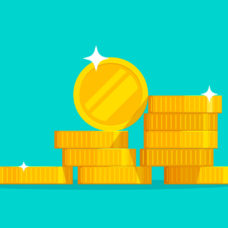The perfect can be the enemy of the good. In trying to spoil their customers for choice, businesses can lose sales. In this post, we will show you why and how not to.
Do you know that feeling of being overwhelmed by choices?
Like when you scroll through films or shows on Netflix struggling to take your pick. Or your thumb is feeling sore from swiping left on Tinder because you can’t make up your mind who to pick as your match. Or looking at a long restaurant menu and can’t decide what to order for lunch.
You have experienced what psychologists call “choice overload,” and its correlative phenomenon “decision paralysis.”
You’re not the only one bombarded by choices almost constantly.
If you happen to run a business, this makes you relate to how it feels for your customers “spoilt for choice.” You don’t want to lose a customer because you made it hard for them to choose, in spite of the quality of your product.
Two Sides of the Same Coin: Choice Overload and Decision Paralysis
An overabundance of choices can lead to too much analysis of a situation and overthinking solutions, which may result in analysis paralysis.
One of Aesop’s fables is illustrative of this effect.
A fox and a cat were once traveling together. In a conversation, the fox boasted to a cat the hundreds of ways it can escape its enemies. The cat had only one.
The two animals surviving tricks were quickly put to the test as a pack of hounds approached. Already, the cat scampered up a tree, and this was its trick. The fox, however, was a victim of choice overload. Among its hundreds of tricks, the fox couldn’t decide on which to try first and was ultimately caught.
The moral this fable conveys is that a single plan in hand is worth more than a hundred in the bush. It becomes harder and harder to make decisions when presented with more and more options.
Living life is like taking a big multiple-choice test. Technically we are free to choose whatever we think works for us. This freedom of choice is one of the salient aspects that define the human experience.
In a classic TED talk, American psychologist Barry Schwartz discusses “the official dogma of Western societies.” He has already taken aim at this “dogma” in his book “The Paradox of Choice.”
“If we are interested in maximizing the welfare of our citizens, the way to do that is to maximize individual freedom… The way to maximize freedom is to maximize choice. The more choice people have, the more freedom they have. And the more freedom they have, the more welfare they have,” says Schwartz
Alvin Toffler first coined “choice overload” in 1970, in his book “Future Shock.” Another close term is “decision paralysis,” which describes the problematic decision-making situation in the presence of many options.
It was just recently that scientists gained insights into the neurological mechanism of choice overload.
In a study, neuroscientists at Caltech uncovered two regions of the brain responsible for the sensation of choice overload. The anterior cingulate cortex weighs the potential costs and benefits of decisions, while the striatum is responsible for determining value.
The fear of potential wrongs could win over the desire for possible success, leading people to choose not to choose.
Taking no action or proposing no solution in a situation with too many options is an unconscious effort to preserve existing options. An overabundance of choices, or over choice, is a problem for both the customer and the marketer.
Customers’ Decision Paralysis and Businesses

Decisions made of many sub-choices take a lot of customers and marketers’ time daily.
Recognized as an expert on choice, Sheena Iyengar is a professor of business in the Management Department at Columbia Business School. In a survey Iyengar did with over 2000 participants, she found that an American customer makes about 70 choices in a typical day.
In one study, Iyengar found that CEOs take nine minutes on average to make 50% of their choices. They would take an hour or more with 12% of options.
Another study shows that people looking for retirement savings plans tend not to commit when faced with too many funds to select from.
The more “choices” you offer, the lower quality they would get, and the more unhappy your customers would feel, leading to reduced commitment.
In 1990, Iyengar and her research team conducted the famous jam experiment (at least among choice researchers). They studied choice overload using jams.
In a California gourmet store, the team set up a tasting booth of jam samples using two selections of 24 and six jam flavors.
The findings of the study are interesting. With 24 jams on display, 60% of customers would stop by, but only 3% would buy a jar. However, when presented with only six jams, only 40% of customers stopped, but 30% of them bought some.
For marketers, choice overload can have significant business implications. Here are four techniques businesses can use to make the choosing process easier for their customers and combat decision paralysis.
1. Cutting: Less is More
An old Italian proverb says that “the better is the enemy of good.” It means that one could achieve anything for want of a better or perfect choice. Too many options can attract foot traffic, but “just enough” choices would drive revenue.
When Procter and Gamble decided to cut their line of Head & Shoulders shampoos from 26 to 15 different kinds, its sales went up 10%.
Ask yourself this: How “different” your different products really are? By cutting redundant options, you will improve the customer’s choosing experience, lower costs, and jumpstart sales.
2. Categorization: Highlight Choices
One way to prevent choice overload and spare customers decision paralysis is to categorize options. If you still have lots of options, even after cutting the extraneous ones, categorization is your trick.
Categories make it easy for customers to cut through choices and compare features across products to decide which option fits their needs.
3. Concretization: Choice Consequences
Concretization is helping your prospects understand the difference between options and the consequences associated with each. Avoid superfluous information and give clear instructions to help customers through the decision-making process.
Customers should feel the difference in a somehow vivid and concrete way. Take cash and credit cards, for example. Why do you think people spend 15-20% more money on average when using a credit card as opposed to cash? Simply because credit cards don’t feel like real money!
4. Complexity: Gradual Commitment
Limiting choice options and categorizing them with tangible differences should lead to a lean and clear-cut table that’s easy to explore. Now your customers don’t feel the choice overload burden, and they can easily pick the product or option right for them.
But you also don’t want your business to stagnate and stifle your innovation. Let your business grow, gradually increasing the complexity of your offer to avoid decision paralysis.
The complexity order in which you offer choices affects the commitment of customers. When the options increase progressively, they will keep prospects engaged much longer and improve the odds for sales.
As the problem of choice overload and decision paralysis is true to online and physical businesses, these tested techniques also work for both.


















Comments (0)
Most Recent